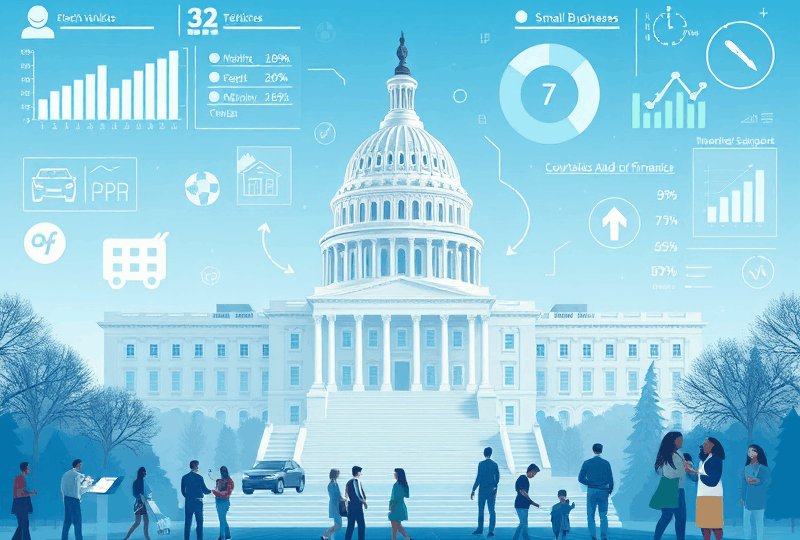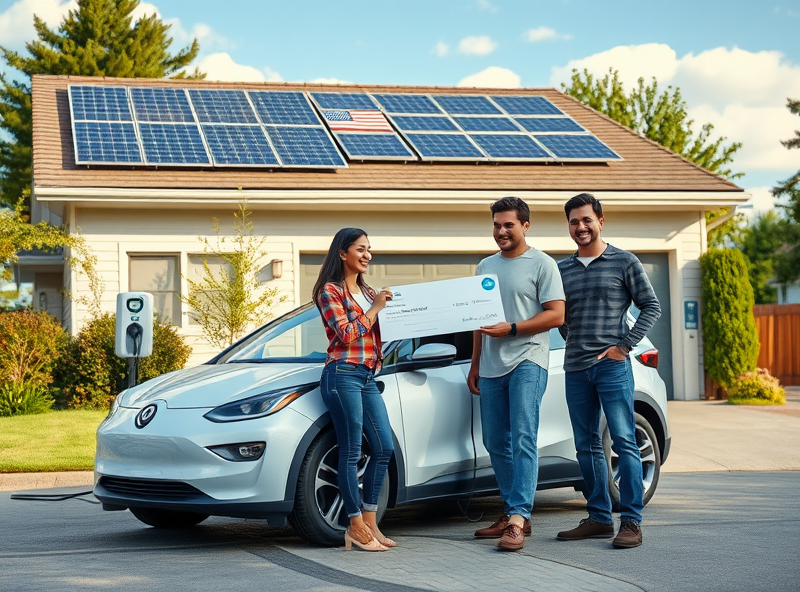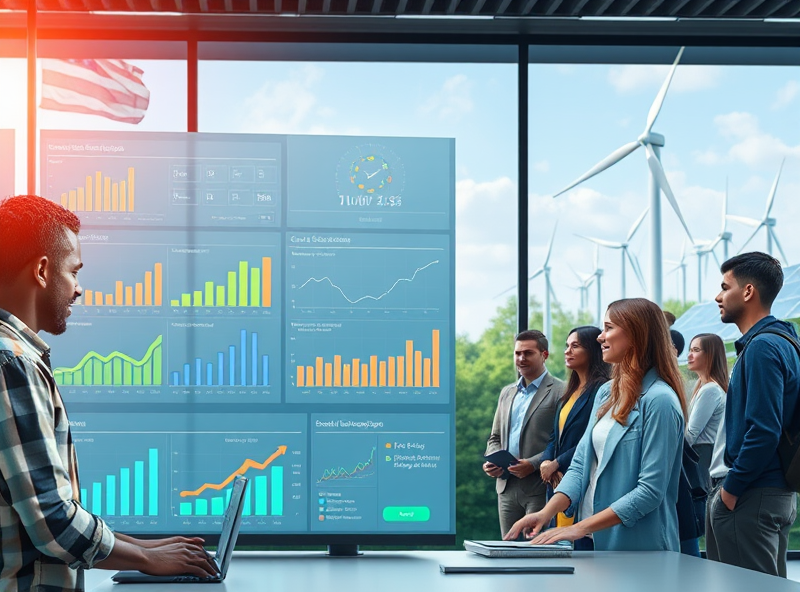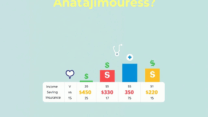
Future U.S. Subsidy Policies: Smarter, Targeted, and Results-Driven
Empowering Social Mobility Through Targeted Aid

As the United States looks toward the future of public subsidies, there’s a growing shift from broad-based financial assistance to smarter, more targeted aid programs. This approach is designed not only to reduce inefficiencies but also to empower individuals and families to move up the economic ladder.
Targeted aid focuses on identifying specific communities or individuals who need support the most—such as low-income families, underrepresented students, or workers displaced by automation—and delivering resources directly to them. This method ensures that every dollar spent has a measurable impact, increasing the chances of long-term success for recipients.
One powerful example is the expansion of the Earned Income Tax Credit (EITC), which provides financial relief to low- and moderate-income workers. Studies have shown that the EITC not only reduces poverty but also improves children’s educational outcomes and future earnings. Similarly, housing vouchers targeted at low-income families have been linked to better health and academic performance among children.
Education is another key area where targeted subsidies can drive social mobility. Programs like Pell Grants, which help low-income students afford college, have been instrumental in closing the education gap. By investing in individuals who are most likely to benefit, these subsidies help break the cycle of poverty and create a more equitable society.
To make these programs even more effective, policymakers are increasingly using data analytics and outcome-based evaluations. This ensures that aid is not only well-placed but also adaptable based on what works best in real-world scenarios.
Ultimately, smarter, targeted, and results-driven subsidies are about more than just saving money—they’re about investing in people. By focusing on those who need help the most and measuring the outcomes, the U.S. can create a more inclusive and upwardly mobile society.
For more information on the effectiveness of targeted subsidies, you can visit the Congressional Budget Office’s official site: https://www.cbo.gov/publication/58848
Performance-Based Subsidies: The Case of Electric Vehicles

As the United States moves toward a cleaner and more sustainable future, federal subsidy policies are evolving to become smarter, more targeted, and results-driven. One of the most compelling examples of this shift is the transition to performance-based subsidies in the electric vehicle (EV) sector.
Traditionally, EV subsidies were distributed based on simple eligibility criteria, such as vehicle type or manufacturer quotas. However, this approach often failed to incentivize innovation or ensure environmental impact. The new performance-based model ties subsidies directly to measurable outcomes—such as vehicle range, battery efficiency, and carbon emission reductions—ensuring that taxpayer dollars support technologies that deliver real benefits.
This model also promotes equity. For instance, the Inflation Reduction Act of 2022 introduced income and vehicle price caps to ensure that subsidies reach middle- and lower-income families, not just luxury EV buyers. Additionally, it encourages domestic manufacturing and supply chain development, boosting job creation in the U.S. clean energy sector.
For consumers, this means more access to high-performing, affordable EVs. For manufacturers, it creates a competitive environment that rewards innovation and sustainability. And for the planet, it means faster progress toward decarbonization.
If you’re considering an EV purchase, it’s worth exploring how these updated incentives can benefit you. The U.S. Department of Energy offers a helpful guide to current EV tax credits and eligibility: https://www.energy.gov/eere/electricvehicles/electric-vehicles-tax-credits-and-other-incentives
Expanding Fiscal Support While Enhancing Efficiency

As the United States continues to evolve its economic strategy, the future of subsidy policies is moving toward a more intelligent, targeted, and results-driven approach. The goal is to expand fiscal support where it’s needed most—while ensuring that every dollar spent delivers measurable impact.
Traditionally, subsidies have been broad and sometimes inefficient, benefiting sectors or populations that may not require urgent assistance. However, with advancements in data analytics and a better understanding of socioeconomic dynamics, the U.S. government is shifting toward precision-based fiscal policies. This means identifying the most vulnerable communities, underfunded industries, and high-impact innovation sectors—and directing support accordingly.
For example, instead of offering blanket subsidies to all farmers, new policies may focus on small-scale, sustainable agriculture initiatives that promote food security and environmental resilience. In the energy sector, subsidies are increasingly being redirected from fossil fuels to clean energy technologies, such as solar and wind, aligning with climate goals and long-term economic sustainability.
Efficiency is also being enhanced through digital infrastructure. With improved tracking systems and AI-powered monitoring tools, the government can now evaluate the real-time impact of subsidies, reduce fraud, and adjust programs dynamically. This results in smarter allocation of resources and better outcomes for taxpayers.
Ultimately, these changes aim to empower economic mobility, foster innovation, and build a more resilient society. For individuals and businesses, understanding these shifts can help them better align with future funding opportunities and policy directions.
For a deeper look into current U.S. subsidy reforms, you can refer to the Congressional Budget Office’s analysis here: https://www.cbo.gov/publication/58860
Boosting Industrial Competitiveness for Future Resilience

To ensure long-term economic resilience, the United States is shifting its subsidy policies toward smarter, more targeted, and results-driven approaches. Rather than offering broad-based financial support, the government is now focusing on strategic sectors such as semiconductors, clean energy, and advanced manufacturing. This shift is designed to strengthen industrial competitiveness and reduce dependency on foreign supply chains.
One of the key goals is to foster innovation and technological leadership. By investing in research and development (R&D) and incentivizing private sector collaboration, the U.S. aims to maintain its edge in high-tech industries. For example, the CHIPS and Science Act allocates over $50 billion to revitalize domestic semiconductor production, a critical move to secure supply chains and national security.
Another important aspect is workforce development. Subsidies are increasingly tied to job creation, skills training, and equitable access to employment opportunities. This ensures that the benefits of industrial growth are widely shared and that the workforce is prepared for the demands of a rapidly evolving economy.
Furthermore, results-driven subsidies include clear performance metrics and accountability measures. This helps ensure taxpayer dollars are used efficiently and effectively, delivering measurable outcomes in terms of productivity, sustainability, and global competitiveness.
For those interested in the policy framework, the U.S. Department of Commerce provides detailed updates and strategic plans related to industrial subsidies and economic development: https://www.commerce.gov/news
By aligning subsidies with national priorities and measurable goals, the U.S. is building a more resilient and competitive industrial base—one that can adapt to future challenges and drive inclusive economic growth.







